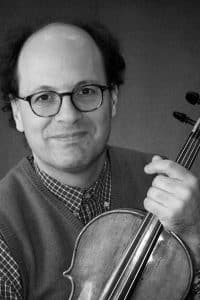
He studied at the Conservatoire National Supérieur de Paris – CNSMDP, with Prof. Serge Collot (1922-2015), whose playing style had a lasting influence on him.
Emile Cantor pursues a career as a soloist: he is successively solo violist in the Netherlands Chamber Orchestra under Szymon Goldberg and David Zinman, the Copenhagen Philharmonic Orchestra and the Orchestre National du Capitole de Toulouse under Michel Plasson.
He was a member of the Düsseldorfer Symphoniker for 18 years and was also solo violist of the Aarhus Symphony Orchestra from 2003 to April 2013.
From 1987 to 2020, Emile Cantor was the violist of the Orpheus Quartet which is the winner of numerous prizes: First Prize at the Rome International Competition, Valentino Bucchi Prize, Prize at the Osaka International Chamber Music Competition and the Munich International Competition and Grand Prix du Disque…
Emile Cantor created numerous works dedicated to him. His solo activities include regular appearances in Europe and the USA.
In addition to his soloist career, he is a sought-after teacher at international masterclasses in Germany, Spain, Belgium, Slovakia, Switzerland, Denmark, Guatemala, Austria and Sweden.
Since 1999 Emile Cantor has been a professor at the Folkwang University of the Arts in Essen, where he leads a master class for viola.
He is also an associated professor at the Conservatori del Liceo in Barcelona, Spain and, since October 2016, he is teaching at the Music Academy (Akademija za Glasbo) in Ljubljana, Slovenia.
Emile Cantor was professor at the Royal Academy of Music in Aarhus until 2010 and he is often in demand as a jury member of renowned competitions, such as the London String Quartet Competition, Max Rostal Competition and the ARD Competition.
Together with the pianist Philippe Terseeler, he founded the concert series “Correspondances” in 1994, a project to combine literature, architecture and visual arts with music in a historical context.
